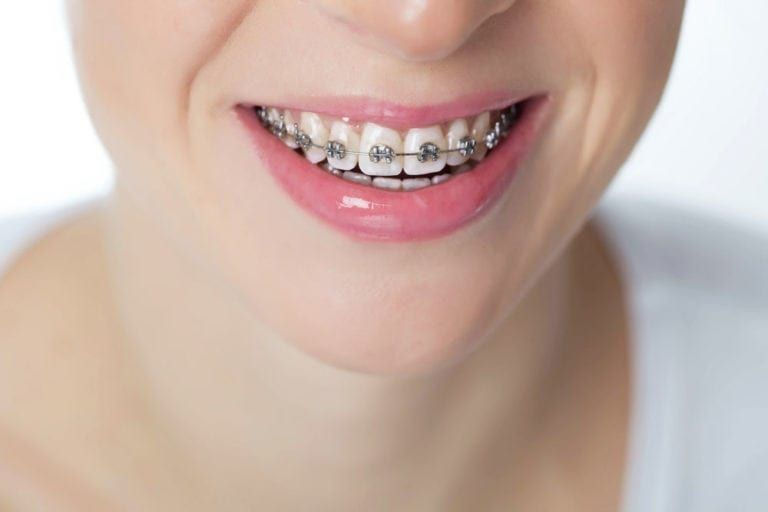How Metal Braces Straighten Your Teeth: The Science Explained
- dclinicdubai
- Aug 4
- 3 min read
If you've ever wondered how metal braces manage to shift your teeth into perfect alignment, you're not alone. These orthodontic devices may seem simple at first glance, but they rely on complex biological and mechanical principles to transform your smile. Whether you're exploring treatment options or already wearing braces, understanding the process can make the journey feel more purposeful. For those seeking metal braces in Dubai, knowing the science behind the treatment can help you feel more confident about your decision.

The Basics of Tooth Movement:
Tooth movement begins at the cellular level. Each tooth is held in place by a ligament known as the periodontal ligament, which connects the tooth to the surrounding bone. When braces apply pressure, this ligament stretches on one side and compresses on the other, triggering a cellular response. Osteoclasts (cells that break down bone) and osteoblasts (cells that build new bone) begin reshaping the jaw to accommodate the new position of the tooth.
Components of Metal Braces:
Metal braces consist of several parts working in unison. Brackets are bonded to each tooth, serving as anchors for the archwire—a flexible metal wire that connects all the brackets. Tiny elastic bands, often colorful, hold the wire in place. The archwire’s tension is what generates the gentle force needed to move teeth over time. Adjustments to the wire's tightness guide how and where the teeth move.
Controlled Force and Tension:
The key to effective orthodontic treatment lies in the controlled application of force. Too much pressure can damage the roots or the supporting bone, while too little won’t move the teeth at all. Your orthodontist carefully calibrates the tension in the archwire to maintain the optimal amount of force. This controlled pressure initiates bone remodeling around each tooth, a slow but consistent process that allows teeth to migrate into their ideal positions.
The Role of Bone Remodeling:
Bone remodeling is the body’s natural response to pressure and stress. When a tooth is pushed in a particular direction, the bone on one side begins to break down (resorption), while new bone forms on the opposite side (deposition). This allows the tooth to move while still being firmly anchored in the jaw. This biological process ensures that tooth movement is permanent and stable, provided that retention devices are used post-treatment.
How Adjustments Work:
Regular orthodontic visits are essential to keep the treatment on track. During these appointments, your orthodontist tightens or replaces the archwire to modify the pressure on your teeth. These adjustments are based on how your teeth are responding and where they need to go next. Each change builds upon the last, ensuring a gradual and controlled movement toward a straighter smile.
The Timeline of Treatment:
The average treatment time with metal braces ranges from 18 months to 3 years, depending on the complexity of your dental issues. Mild misalignments may require less time, while more severe cases will need extended care. Your body's response to bone remodeling, age, and how well you follow orthodontic guidelines all influence the duration of treatment. Patients receiving metal braces in Dubai can expect regular follow-ups to assess progress and make timely adjustments.
Pain and Discomfort Explained:
It's common to feel discomfort after getting braces or following an adjustment. This sensitivity is a result of the pressure applied to the teeth and the activation of the periodontal ligament. The discomfort usually subsides within a few days as the mouth adjusts to the changes. Over-the-counter pain relief and soft foods can help ease the transition during these times.
Importance of Consistency:
Wearing braces consistently and following your orthodontist’s instructions are vital for success. Missing appointments, breaking brackets, or neglecting oral hygiene can delay progress and increase treatment time. Adhering to guidelines ensures your braces function as intended and your teeth continue to move predictably.
Stability After Treatment:
Once your braces are removed, the journey doesn’t end. Teeth can shift back to their original positions if not properly maintained. That’s why retainers are essential. These devices help your teeth “settle” into their new places while your jawbone solidifies around them. For patients who’ve invested in metal braces in Dubai, post-treatment care is just as important as the braces themselves.
Advancements in Metal Braces:
Modern metal braces are far more comfortable and discreet than their earlier versions. Today’s brackets are smaller, less bulky, and often made from high-grade stainless steel that resists corrosion. Advanced archwires with shape-memory properties can respond to body heat, providing more consistent pressure with fewer adjustments. These innovations make the treatment process smoother and more efficient than ever before.
Final Thoughts:
Metal braces aren’t just wires and brackets—they’re tools guided by science and precision. The controlled pressure, cellular response, and bone remodeling involved are what make orthodontic treatment effective and long-lasting. If you’re considering metal braces in Dubai, understanding how the process works can give you the clarity and confidence needed to start your journey toward a healthier, straighter smile.


Comments